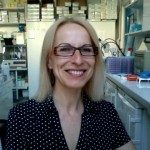Link to Pubmed [PMID] – 26470456
Rev. - Off. Int. Epizoot. 2015 Apr;34(1):175-83, 165-74
Vector-borne diseases are principally zoonotic diseases transmitted to humans by animals. Pathogens such as bacteria, parasites and viruses are primarily maintained within an enzootic cycle between populations of non-human primates or other mammals and largely non-anthropophilic vectors. This ‘wild’ cycle sometimes spills over in the form of occasional infections of humans and domestic animals. Lifestyle changes, incursions by humans into natural habitats and changes in agropastoral practices create opportunities that make the borders between wildlife and humans more permeable. Some vector-borne diseases have dispensed with the need for amplification in wild or domestic animals and they can now be directly transmitted to humans. This applies to some viruses (dengue and chikungunya) that have caused major epidemics. Bacteria of the genus Bartonella have reduced their transmission cycle to the minimum, with humans acting as reservoir, amplifier and disseminator. The design of control strategies for vector-borne diseases should be guided by research into emergence mechanisms in order to understand how a wild cycle can produce a pathogen that goes on to cause devastating urban epidemics.

